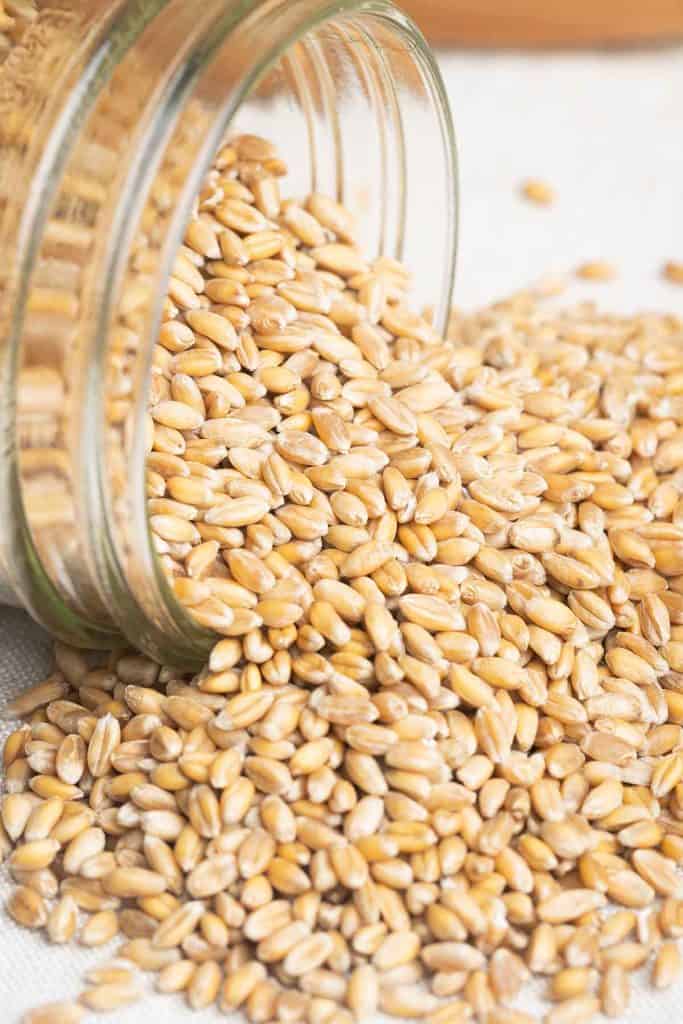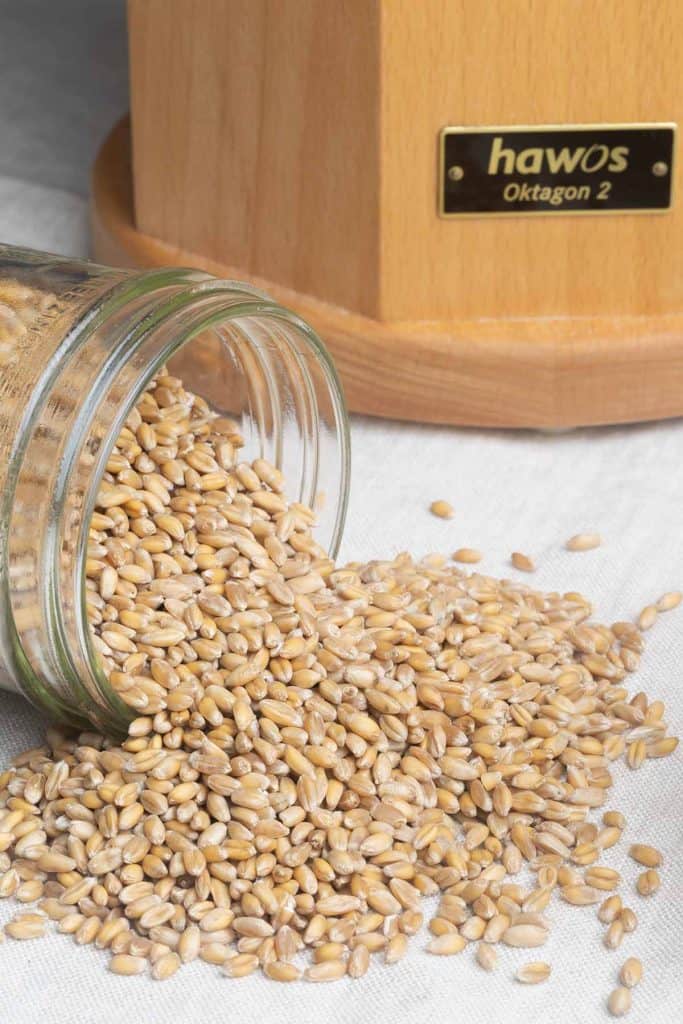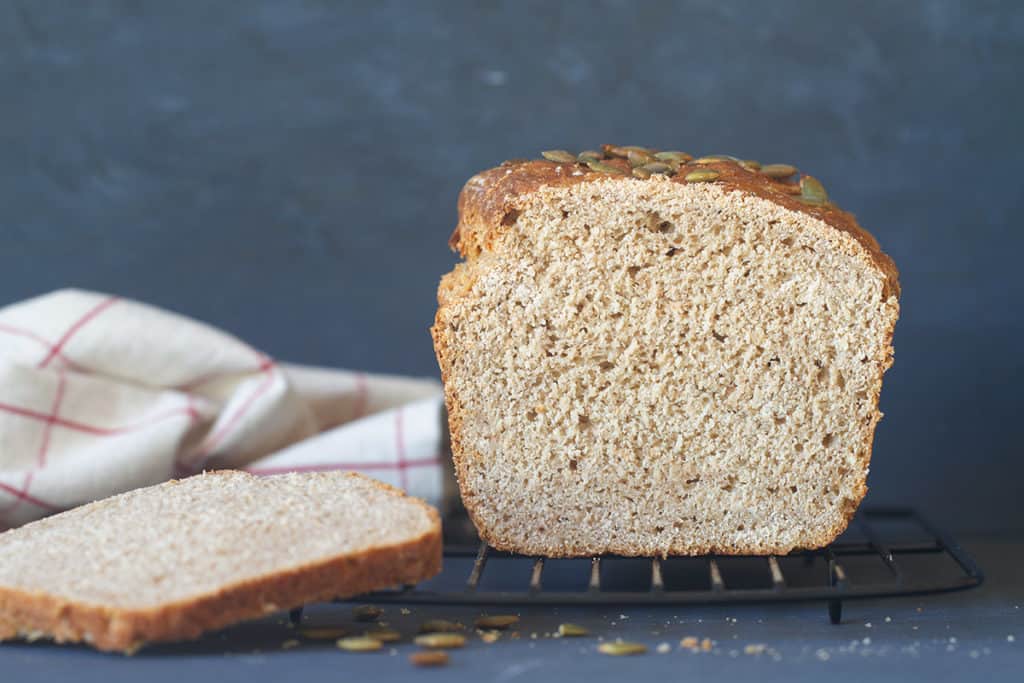The Ultimate Guide To Milling Flour At Home
Milling flour at home has become a popular trend in recent years, and for good reason. There are numerous benefits to make your own flour and I’m covering seven reasons to start milling flour at home in this article as well as tips around flour storage, grain mills, and my favorite recipes using freshly stone ground flour.

If you are looking to elevate your baking game and improve the nutritional value of your food, milling flour at home is definitely worth considering. While milling flour at home may require an initial investment in a mill or grinder, the cost savings and health benefits make it a worthwhile investment in the long run in my opinion.
7 reasons to start milling flour at home
1. Save money
The biggest benefit of milling your own flour is cost savings in the long run, as store-bought organic flours are often expensive and prone to spoilage.
Buying grains in bulk and milling them at home not only saves money but also extends the shelf life of the grains, providing fresh and nutritious flour whenever needed.
2. Fresher flour
One of the significant advantages of milling flour at home is the unmatched freshness it offers.
Unlike store-bought flour that can lose flavor and nutritional value over time, milling flour right before use ensures the utilization of the freshest grains, preserving their full range of nutrients and flavors.
3. Healthier food
Home milling preserves the maximum nutrients comparison to store-bought flour, which often contains preservatives for extended shelf life.
Whole grains contain fiber, protein, vitamins, and minerals that contribute to a nutritious diet, making home milling a valuable choice for nutrient-rich flour.
4. It tastes better
Milling grains releases natural oils that contribute to the unique aroma and taste of flour. Freshly milled flour, with its retained natural oils, creates lighter, fluffier baked goods and a unique depth of flavor. The preserved oils also retain moisture, resulting in wonderfully moist and flavorful breads, cakes, and pastries.
5. Make it your own
Milling flour at home provides the opportunity to experiment with a variety of grains, including gluten-free options, ensuring those with dietary restrictions can enjoy homemade bread with great taste and texture.
It also allows control over the flour’s texture, from fine to coarse, and the ability to create custom blends tailored to personal preferences and dietary needs. By blending different grains and adding spices or herbs, you can create your own customized flour blends and unique baked goods.
6. Food security
Milling your own flour enhances food security by promoting self-sufficiency, ensuring availability during food shortages, preserving food diversity, extending storage options, and accommodating dietary needs.
It empowers you to have greater control over your food supply and contributes to a more resilient and secure food system.
7. It’s fun
Milling your own flour not only brings satisfaction and joy to the baking process but also offers a fun and educational experience that can be enjoyed by the entire family.
From making bread to cakes and pastries from scratch, it’s a delightful way to elevate your baking and create memories together.

Grain and fresh flour storage
Whole grains are ideally stored in a cool, dry, and airtight container to maintain their freshness and prevent moisture, pests, and spoilage. It is best to store them away from direct sunlight and in a location with a stable temperature, such as a pantry or cupboard. I use foodgrade lidded storage buckets and store them in the bottom of the pantry.
Freshly ground flour, such as wheat flour, contains oils that can turn rancid over time. To prolong its freshness, it is advisable to store it in an airtight container in the refrigerator. The cooler temperature helps slow down the oxidation process and maintains the quality of the flour for a longer period.
Where to buy grains
You can purchase whole grains directly from farmers or coops, or find a trusted retailer that stocks them. If you’re getting them from one of the unpackaged stores make sure to check the age and storage of the grains.
I buy my berries from a small organic farm called Milmore Downs in the South Island in New Zealand. I buy larger quantities in bulk and get a mixture of rye, wheat, and spelt.
If you’re living in the United States, check out the Oldways Wholegrain Council for a list of local grain suppliers.
Hodmedod’s offers the British market grains from local farms.
Can you make gluten-free flour at home?
Yes, you can make gluten-free flour at home using a grain mill. Rice, quinoa, buckwheat, amaranth, and millet are a few examples of grains that can be milled into gluten-free flours.
It’s important to clean the grain mill to avoid cross-contamination and to experiment with different grain combinations for desired texture and flavor in gluten-free baking.

Popular home grain mills
When choosing a home grain mill, factors to consider include the size of the mill (small to large) based on your needs, price range, desired milling method (stone flour mill, electric, manual), and overall quality.
There are several popular home grain mills available on the market. Here are a few examples:
Hawos is a well-known German brand that offers a range of grain mills suitable for home use. They provide both electric and manual options, and their mills are known for their durability and quality.
Mockmill offers various models that attach to stand mixers or operate independently. These mills are recognized for their versatility and ability to grind a wide range of grains.
Nutrimill is known for high-speed mills that efficiently grind grains into flour, and their products are known for their performance and ease of use.
After doing some research I decided that the best grain my for my needs is the Hawos Octagon 2.
How to use freshly-ground flour
Using freshly ground flour in place of store-bought whole grain flour brings a wonderful freshness and flavor to your baked goods. Depending on the grain and coarseness of the flour you’re milling, you might need to adjust your favorite recipes.
Fresh wholegrain flour often has a higher moisture content, so you might need to reduce the liquid in the recipe slightly or increase the flour if the dough or batter appears too wet.
If you prefer a finer texture, you can also sift the freshly ground flour to remove any larger particles. This step is optional and depends on your personal preference and the type of baked goods you’re making.

My top fresh flour recipes
Freshly milled flour adds a unique flavor and freshness to your recipes. Here are a few examples that can easily be made with fresh wholemeal flour:
Related recipes
For more resources, check out my all-purpose flour 101, ancient grain guide, and 35 ways to save money by cooking from scratch.






